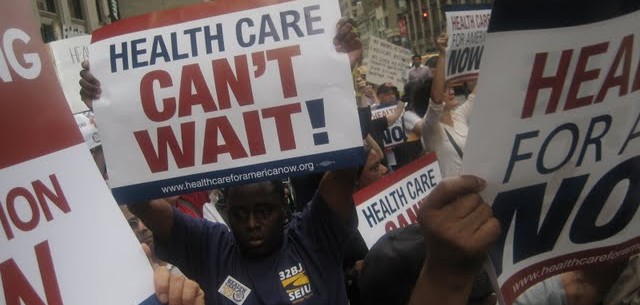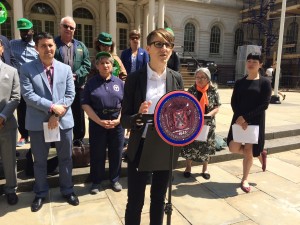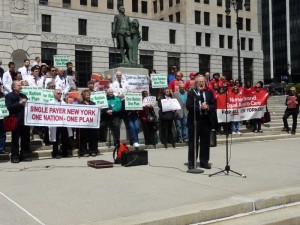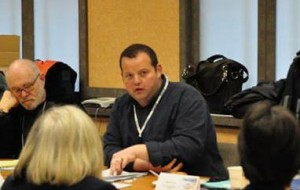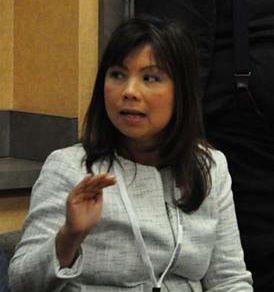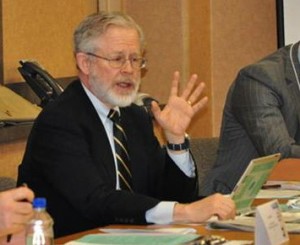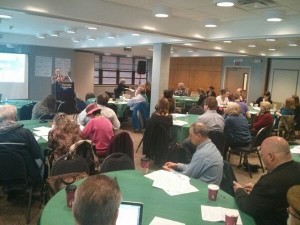They’re at it again! (Actually, do they ever stop?)
Three years ago, the State Legislature and Governor Cuomo enacted a law guaranteeing New Yorkers the right to receive our prescription drugs either by mail order delivery or from a local community pharmacy. However, the insurance companies and their “pharmacy benefit manager” (PBM) pals have exploited a minor provision of that law to continue to deny consumers that right to choose. Instead, insurers are forcing patients to use mail order only, especially for so-called “specialty drugs” (often arbitrary defined as anything costing more than $250 for a month’s supply.) They’re also imposing onerous and ridiculous terms and conditions on community pharmacies in order to certify them as in-network.
Mail order works fine for many people. It can be convenient and save money. However, there can also be problems for people when packages don’t arrive on time, they get lost in the mail, they get left with neighbors (thereby violating patients’ privacy), or they get left on doorsteps and then are stolen, among other difficulties. In such circumstances, patients then have to pay full cost for a replacement, which can often be hundreds or thousands of dollars. In some cases, their health and well-being can be placed in jeopardy if they miss doses of maintenance drugs.
Many people prefer to use a local community pharmacy instead where they can pick up their medicines at a convenient time and not miss refills. They also prefer to consult directly with a local professional pharmacist who has a record of all their medicines on file (often prescribed by different providers) to watch out for any complications and contraindications. They prefer this option rather than have to deal with an often minimally-trained customer service agent at the end of a phone line far away who simply reads off a boilerplate script.
Why are insurers doing this?
Simple: follow the money. Many of the big PBMs are wholly-owned subsidiaries of insurance companies. Others have sweetheart deals with them. By denying us this right to choose, insurers and PBMs are cornering and gaming the market, and trying to put our local drugs stores out of business.
The good news:
There’s a bill in the State Legislature to restore our right to choose and eliminate insurers’ outrageous terms and conditions they want to impose on local drug stores. This bill won’t drive up drug prices or insurance premiums at all, provided consumers use an in-network pharmacy. There’s wide, bipartisan support for this bill, and it has already passed the Assembly unanimously.
The challenge:
The bill is now hung-up in the Senate because the chair of the Insurance Committee (Sen. James Seward of Oneonta) won’t let it out for a floor vote. He’s parroting the industry’s specious claims that community pharmacists can’t be trusted to dispense specialty drugs (despite the fact that they’ve been handling them for years.)
How the Legislative Battle is Proceeding:
The insurance and PBM industry is running radio ads, putting up billboards, and placing ads in newspapers across the state, claiming that this bill will create a new “prescription drug tax”, raise insurance premiums, threaten patient safety, and undermine the mail-order drug business. In particular, they are scaring seniors that their drug costs will go up.
In response, New Yorkers for Accessible Health Coverage (a statewide coalition of chronic illness and disability groups) has been joined by Gay Men’s Health Crisis, NYS Bleeding Disorders Coalition, the MS Society, Consumers’ Union, the Lupus Foundation, the Pharmacists Society of the State of NY, and the Coalition of Community and Chain Store Pharmacies. Together, they are saying to state lawmakers, “Do it again, just like you did three years ago, but close the loophole this time. Make sure New Yorkers maintain our right to choose how we get our medicines.”
The 2014 Legislative Session ends by this coming Friday, June 20. Advocates are hoping that, given the broad support among rank-and-file Senators, Senate leadership will take the bill to the floor for a vote despite Senator Seward’s opposition.
What you can do: read our Action Alert here.
